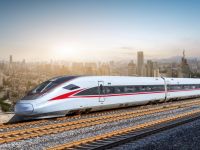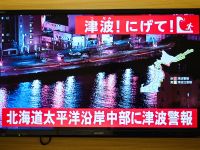Today, we’re experiencing a new energy transition; one that is redefining the global power generation portfolio and is centered on the growing realisation that renewables — and solar in particular — are no longer a subsidised extra, but a need-driven necessity. Consider this: at the turn of this century, the total installed capacity for solar photovoltaic (PV) modules was 1.5 gigawatts (GW); less than 15 years later, according to analyst estimates, the global industrywide installed capacity at the end of 2013, was 137GW. This is roughly the capacity equivalent of building nine nuclear power plants a year for 15 years.
Yet, despite the impressive numbers, the world is nowhere near leveraging the full potential of sunlight because of two principle reasons: first, the technologies are still evolving, some — such as First Solar’s thin film — faster than others; and second, the adoption of solar energy is disproportionate to its cost-competitiveness and reliability. In other words, although PV solar is more cost competitive and reliable than ever before, its use is often not as widespread as it ought to be.
While no one can claim that solar alone offers the solution to the world’s energy problems, it can — and should — play an important role in a country’s energy generation portfolio. Going into granular detail, the solar component of an energy generation portfolio can be divided into sub-segments: centralised utility-scale power plants reliably delivering clean solar electricity in bulk to the high-voltage transmission grid; distributed generation systems that can help rapidly bridge the gap between energy demand and supply on the lower voltage distribution grid that serves customers directly; hybrid solutions, working in tandem with liquid fuel generators to address specific applications; and finally, off-grid systems delivering electricity to remote areas that do not have the benefit of being connected to the grid.
While the region is focusing its efforts on developing its utility-scale solar portfolio, the benefits of distributed generation are not being overlooked. In fact, as the solar energy resolution recently issued by Shaikh Hamdan bin Mohammed bin Rashid Al Maktoum, Crown Prince of Dubai, demonstrates, our visionary leaders have already recognised its importance.
The concept of generation of solar power at or near the point of utilisation — often on the rooftops of residences, and commercial and industrial buildings — has been gaining ground as a viable means of augmenting the volume of energy that utility-scale plants provide to the grid. Distributed solar energy plants make perfect sense when looking at, for instance, offsetting electricity consumption at peak times, or ‘peak shaving’ as those in the industry know it.
In a reflection of solar PV’s scalability, distributed generation could take the form of a kilowatt-scale system on the roof of a house in Dubai’s Al Barsha district or a megawatt-scale power plant at or on a factory in Jebel Ali. Considering the fact that 65 per cent of the electric utility loads are within buildings, out of which about 70 per cent of the peak load is driven by electricity consumed for air-conditioning, a distributed generation approach effectively creates a win-win situation for utility companies and their customers.
Since electricity consumption is highest around the time that the sun is at its zenith, distributed solar generation can help preserve the integrity of the grid by allowing users to self-consume the energy they produce at this critical point of the day, reducing their dependence on the grid. In markets where a feed-in-tariff exists, these distributed solar plants of varying sizes would contribute towards peak shaving, by supplying power to the utility companies, allowing them to minimise power generation from peaking conventional generators. This would not only ease pressure on the rest of the power generation portfolio, saving resources and costs; it would also allow a utility company to optimise the utilisation of its conventional assets as base-load generators.
There is no denying the tremendous potential to be realised from choosing a multi-pronged approach to harnessing solar energy. At the same time, it is also evident that there needs to be a fundamental shift in attitude towards renewables in general and solar energy in particular. The region as a whole needs to move towards a mindset where it is as commonplace to install a PV system, as it is to install an air conditioning or a water heating system in commercial, industrial and even residential buildings.
By: Ahmed S. Nada
The writer is vice-president and region executive for the Middle East at First Solar. Views expressed by him are his own and do not reflect the newspaper’s policy.








